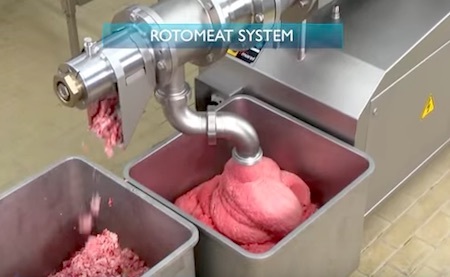Marc Abrahams's Blog, page 240
November 14, 2016
Intimacy and Smartphone Multitasking—A New Oxymoron?
If you are sometimes tempted to ask “What is the relationship between smartphone multitasking and romantic intimacy?” may we recommend a paper in Psychological Reports, August 5, 2016, entitled : Intimacy and Smartphone Multitasking—A New Oxymoron?
“This research suggests that smartphone multitasking has a negative association with face-to-face interactions. People should attend to the costs of smartphone use during face-to-face interactions.“
Note: The image shows a work widely attributed to the UK artist Banksy

November 13, 2016
Tattooing to ‘Toughen Up’ With Good Old Immunoglobulin A?
Immunoglobulin A holds great allure for some researchers. Tattooing holds great allure for other researchers. For three researchers, the combination of immunoglobulin A and tattooing is worth writing a paper about. That paper is:
“Tattooing to ‘Toughen Up’: Tattoo Experience and Secretory Immunoglobulin A,” Christopher D. Lynn [pictured here, sitting in a chair], Johnna T. Dominguez, and Jason A. Decaro, American Journal of Human Biology, vol. 28, no. 5, 2016, pp. 603–609.
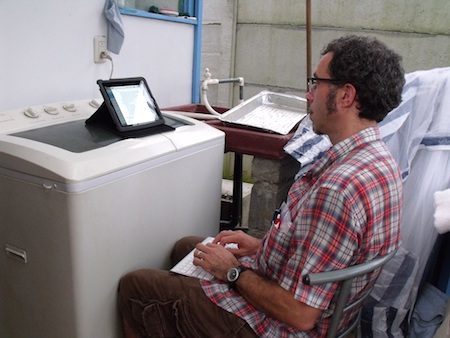
The authors, at the University of Alabama, explain:
[We] collected data from three tattoo studios in Leeds and Tuscaloosa, Alabama….
Participants were 24 women and 5 men (aged 18–47). We measured immune function using secretory immunoglobulin A (SIgA) and cortisol (sCORT) in saliva collected before and after tattoo sessions. We measured tattoo experience as a sum of number of tattoos, lifetime hours tattooed, years since first tattoo, percent of body covered, and number of tattoo sessions…. We used hierarchical multiple regression to test for a main effect of tattoo experience on post-tattoo SIgA, controlling for pretest SIgA, tattoo session duration, body mass, and the interaction between tattoo experience and test session duration….
Our data suggest that the body habituates over time to the tattooing stressor. It is possible that individuals with healthy immune systems heal faster, making them more likely to get multiple tattoos.
Here’s further detail:
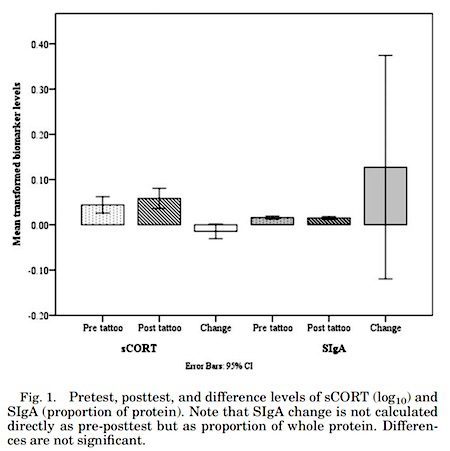

November 11, 2016
A Cogno-Intellectual Theory: “The Perilous Whiteness of Pumpkins”
Complicated theories can add flavor to the cogno-intellectual discourse. This study adds pumpkin flavor:
“The Perilous Whiteness of Pumpkins,” Lisa Jordan Powell and Elizabeth S.D. Engelhardt, GeoHumanities, vol. 1, no. 2, 2015. The authors, at the University of British Columbia, the University of the Fraser Valley, and the University of North Carolina at Chapel Hill, explain:
“This article examines the symbolic whiteness associated with pumpkins in the contemporary United States. Starbucks’ pumpkin spice latte, a widely circulated essay in McSweeney’s on “Decorative Gourd Season,” pumpkins in aspirational lifestyle magazines, and the reality television show Punkin Chunkin provide entry points into whiteness–pumpkin connections. Such analysis illuminates how class, gender, place, and especially race are employed in popular media and marketing of food and flavor… When considered vis-à-vis violence and activism that incorporated pumpkins, these analyses point toward the perils of equating pumpkins and whiteness.”
(Thanks to Ron Josephson for bringing this to our attention.)

November 10, 2016
AIR U.S. Presidential Election Algorithm Falsified
AIR U.S. Presidential Election Algorithm Falsified
by Eric Schulman and Daniel Debowy
The Annals of Improbable Research United States Presidential Election Algorithm (Debowy and Schulman, AIR Online, 20 October 2003) was developed based on the experience of the major party candidates for president and vice president in each of the 54 United States presidential elections between 1789 and 2000. It correctly predicted the outcome of the 2004, 2008, and 2012 United States presidential elections, but it did not correctly predict the outcome of the 2016 United States presidential election. The algorithm predicted that the Democratic ticket of Hillary D. R. Clinton and Timothy M. Kaine would defeat the Republican ticket of Donald J. Trump and Michael R. Pence on November 8, 2016, but this did not happen.
The concept of falsifiability is important to the progress of science. A theory needs to be testable in order to determine whether its predictions agree with reality. If it can never be falsified (for example, if one could always modify the theory to make it correct after the fact), then it is not a good theory. The theory that the outcome of United States presidential elections could be predicted based on the experience of the major party candidates for president and vice president was a testable theory. You can never prove a scientific theory beyond all doubt, but you should be able to test the theory to gain confidence in its correctness.
We obtained another data point every four years since 2004 and each success increased our confidence in the theory. Three successes out of three trials showed that it was possible the algorithm would always work, but it did not exclude the possibility that the successes were caused by random chance (those data suggested with 95% confidence that the algorithm would correctly predict the results between 37% and 100% of the time). Had the algorithm correctly predicted the 2016 and 2020 elections, then we could have concluded with more than 95% confidence that it was better than random chance.
The outcome of the 2016 United States presidential election showed that the algorithm does not always work. Three successes out of four trials allows us to conclude with 95% confidence that the algorithm will correctly predict between 20% and 99% of United States presidential elections. As long as the winner always comes from one of two parties, merely flipping a coin would correctly predict the outcome of a United States presidential election 50% of the time. If we can’t be confident that the algorithm correctly predicts outcomes more than 50% of the time, it is not useful.
Therefore, we have concluded that the Annals of Improbable Research United States Presidential Election Algorithm is not a useful method for predicting the outcome of United States presidential elections.

Show this — “Bullshit” — to two friends…
In this short video, Harry Frankfurt tells you what bullshit is, and how to recognize it.
If you want to do some genuine good for the world: show the video to two friends, and ask each of them to show it to two friends.

Identifying one’s pet(s) by how they smell
 It’s (more or less) a given that dogs can reliably identify individual humans by their smell. But what about the other way around? To find out, Dr Deborah Wells and Professor Peter Hepper of the Canine Behaviour Centre, School of Psychology, at Queen’s University Belfast, UK, conducted a set of experiments. A 1m square blue blanket was used to collect each dog’s odour by placing it in the dog’s bed for three consecutive nights. (The owners were instructed not to wash their dog for 1 month prior to the testing.) And then –
It’s (more or less) a given that dogs can reliably identify individual humans by their smell. But what about the other way around? To find out, Dr Deborah Wells and Professor Peter Hepper of the Canine Behaviour Centre, School of Psychology, at Queen’s University Belfast, UK, conducted a set of experiments. A 1m square blue blanket was used to collect each dog’s odour by placing it in the dog’s bed for three consecutive nights. (The owners were instructed not to wash their dog for 1 month prior to the testing.) And then –
“Twenty-six dog owners were required to smell two blankets, one impregnated with the odour of their own dog, the other impregnated with the odour of an unfamiliar dog. Participants were required to indicate which of the odours smelt the strongest, which smelt the most pleasant, and which of the odours belonged to their own dog. Most of the participants (88.5%) were able to recognise the odour of their own dog.”
See: The Discrimination of Dog Odours by Humans in: Perception January 2000 vol. 29 no. 1 111-115.
Two years later, the study was followed-up by another – which concentrated instead on cats :
“Each owner was instructed to collect his/her cat’s odour by rubbing a 1m x 1m blanket back and forwards over the animal’s back 50 times.”
– but this time the pet-owners didn’t do quite so well in sniffing tests :
“Only thirteen (52%) of the participants were able to recognise the odour of their own cat.”
See: Last but Not Least : The discrimination of cat odours by humans in Perception, April 2002 vol. 31 no. 4 511-512
Image Credit : Unfortunately, neither study provides photos of the blankets which were used, so instead we show a ‘Foxy’ Faux-Fur Dog Blanket, available at £70.00 from specialist dog-bedding suppliers Charley Chau Limited, Manchester, UK.

November 9, 2016
Podcast 89: Can a cat be both a solid and a liquid? (The Deborah Number)
Can a cat be both a solid and a liquid? A physics paper explores this question, using a special number called the “Deborah number”. We explore that physics paper, in this week’s Improbable Research podcast.
SUBSCRIBE on Play.it, iTunes, or Spotify to get a new episode every week, free.
This week, Marc Abrahams teams up with fluid dynamicist Nicole Sharp, creator of FYFD, the internet’s most popular site about fluid dynamics. Sharp accompanies her dramatic readings from the study:
“On the Rheology of Cats,” Marc-Antoine Fardin, Rheology Bulletin, vol. 83, no. 2, July 2014, pp. 16-17 and 30.
Rheology, the study of how things (liquids, for example) flow.
The Deborah number.
BONUS [not discussed in the podcast]: Karen Brulliard reports, in the Washington Post, on the history of scientists analyzing falling cats. (Many years ago we published a fictional take on the question “Does a Cat Always Land on Its Feet?“)
Here’s a bit of detail from the study:
The mysterious John Schedler or the shadowy Bruce Petschek perhaps did the sound engineering this week.
The Improbable Research podcast is all about research that makes people LAUGH, then THINK — real research, about anything and everything, from everywhere —research that may be good or bad, important or trivial, valuable or worthless. CBS distributes it, on the CBS Play.it web site, and on iTunes and Spotify).

November 8, 2016
Vocabulary Lesson: Organogels and Comminuted Meat
Today’s vocabulary lesson is drawn from a newly published study about meat: The vocabulary words are Organogel (which means “a class of gel composed of a liquid organic phase within a three-dimensional, cross-linked network”) and Comminuted (which means “reduced to minute particles or fragments”).
 The study is: “Potential use of organogels to replace animal fat in comminuted meat products,” S. Barbut [pictured here], J. Wood, A. Marangoni, Meat Science, vol. 122, 2016, pp. 155–162. The authors are at the University of Guelph, Canada.
The study is: “Potential use of organogels to replace animal fat in comminuted meat products,” S. Barbut [pictured here], J. Wood, A. Marangoni, Meat Science, vol. 122, 2016, pp. 155–162. The authors are at the University of Guelph, Canada.
BONUS (related): Here’s video of a RotoMeat Meat Harvester at work comminuting meat:

November 7, 2016
How Crazy Ants Deal with Legos
Ants are better than many humans suspect at dealing with Legos. This newly published study explains:
“Collective strategy for obstacle navigation during cooperative transport by ants,” Helen F. McCreery, Zachary A. Dix, Michael D. Breed, Radhika Nagpal, Journal of Experimental Biology, vol. 219, 2016, pp. 3366-3375. The authors, at the University of Colorado and Harvard University, report:
“We blocked cooperative transport groups of Paratrechina longicornis [better known as “crazy ants”] with obstacles of varying complexity, analyzing groups’ trajectories to infer what kind of strategy the ants employed…. We found that transport groups use a stochastic strategy that leads to efficient navigation around simple obstacles, and still succeeds at difficult obstacles. All obstacles were constructed out of Lego and coated on the inside with Insect-a-Slip to prevent groups climbing over them.”
The group made a video to explain what they did and found. Lead author McCreery is the video host:
Here’s further detail from the study:
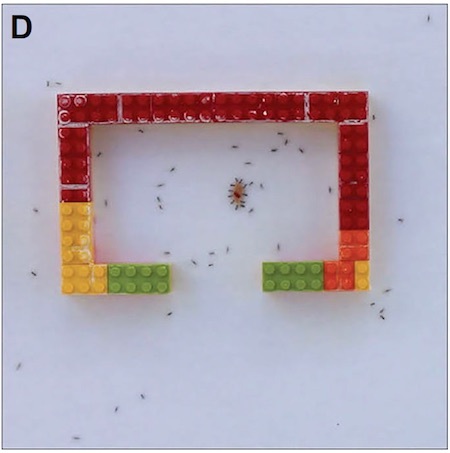
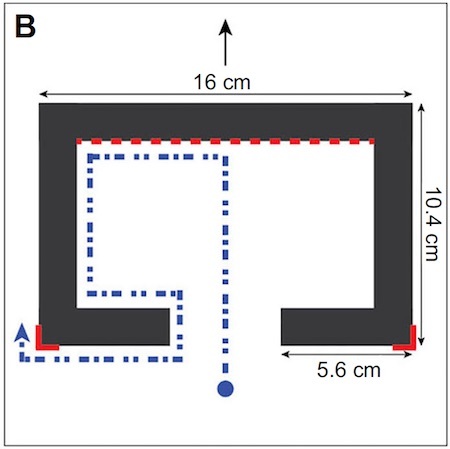
(Thanks to LFHCfS member Anne A. Madden for bringing this to our attention.)

Bats versus cats and wind turbines
Wind turbines kill, on average, two bats a month, says a newly published study. The :
A new study of wind turbines in Britain found that each turbine killed one to two bats each month on average… The risks to birds of the blades of wind turbines are becoming well understood, but the risk to bats, while known, has been poorly defined until now, said Fiona Mathews, lead author of the study and an assistant professor of mammalian biology at the University of Exeter in England.
Bats face other threats. Among those threats: cats. An Italian/British study published 19 2014 now implies that cats pose an even greater threat to bats than are wind turbines:
“Curiosity killed the bat: domestic cats as bat predators,” Leonardo Ancillotto, Maria Tiziana Serangeli, and Danilo Russo, Mammalian Biology-Zeitschrift für Säugetierkunde, vol. 78, no. 5, 2013, pp. 369-373. The authors, at Università degli Studi di Roma La Sapienza, Italy, Università degli Studi di Napoli Federico II, Italy, and the University of Bristol, UK, report:
“We based our study on 1012 records of bats admitted at four wildlife rescue centres in peninsular Italy in 2009–2011…. predation events concentrate in sparse-urban and rural areas, where free-ranging cats occur more frequently… some individual cats may specialize in capturing bats…. Our analysis covered a broad geographical area over a relatively long period and suggests that the threat posed to bats by cats may be significant.”
Only future studies can tell, with any degree of documented, calm assurance, the relative dangers to bats — measured in gross deaths per annum — of cats versus wind turbines.
Other studies could be made to directly assess the relative dangers to birds — measured in gross deaths per annum — of cats versus wind turbines. Some work has already been done on that question.
BONUS: Video of a cat catching a bat, accompanied incidentally by human epithets:

Marc Abrahams's Blog
- Marc Abrahams's profile
- 14 followers







